Manuel Rey-Area
360MonoDepth: High-Resolution 360° Monocular Depth Estimation
Nov 30, 2021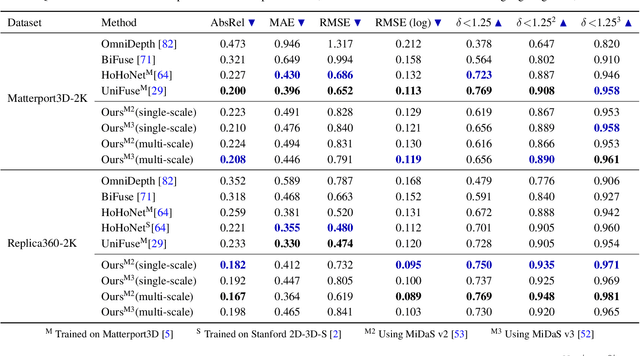
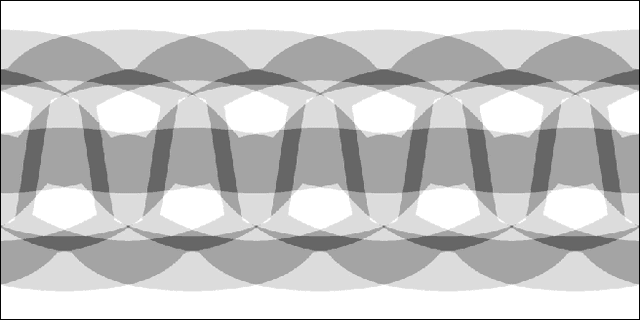

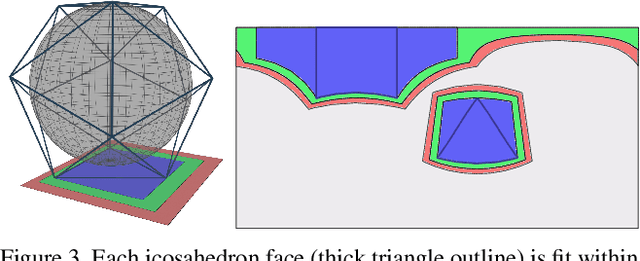
Abstract:360{\deg} cameras can capture complete environments in a single shot, which makes 360{\deg} imagery alluring in many computer vision tasks. However, monocular depth estimation remains a challenge for 360{\deg} data, particularly for high resolutions like 2K (2048$\times$1024) that are important for novel-view synthesis and virtual reality applications. Current CNN-based methods do not support such high resolutions due to limited GPU memory. In this work, we propose a flexible framework for monocular depth estimation from high-resolution 360{\deg} images using tangent images. We project the 360{\deg} input image onto a set of tangent planes that produce perspective views, which are suitable for the latest, most accurate state-of-the-art perspective monocular depth estimators. We recombine the individual depth estimates using deformable multi-scale alignment followed by gradient-domain blending to improve the consistency of disparity estimates. The result is a dense, high-resolution 360{\deg} depth map with a high level of detail, also for outdoor scenes which are not supported by existing methods.
FuCiTNet: Improving the generalization of deep learning networks by the fusion of learned class-inherent transformations
May 17, 2020

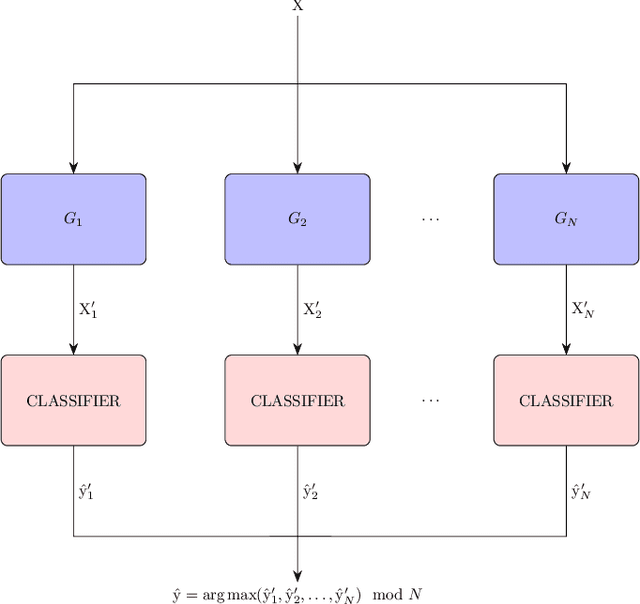
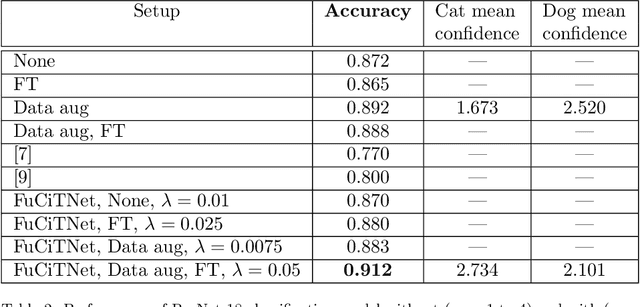
Abstract:It is widely known that very small datasets produce overfitting in Deep Neural Networks (DNNs), i.e., the network becomes highly biased to the data it has been trained on. This issue is often alleviated using transfer learning, regularization techniques and/or data augmentation. This work presents a new approach, independent but complementary to the previous mentioned techniques, for improving the generalization of DNNs on very small datasets in which the involved classes share many visual features. The proposed methodology, called FuCiTNet (Fusion Class inherent Transformations Network), inspired by GANs, creates as many generators as classes in the problem. Each generator, $k$, learns the transformations that bring the input image into the k-class domain. We introduce a classification loss in the generators to drive the leaning of specific k-class transformations. Our experiments demonstrate that the proposed transformations improve the generalization of the classification model in three diverse datasets.
 Add to Chrome
Add to Chrome Add to Firefox
Add to Firefox Add to Edge
Add to Edge